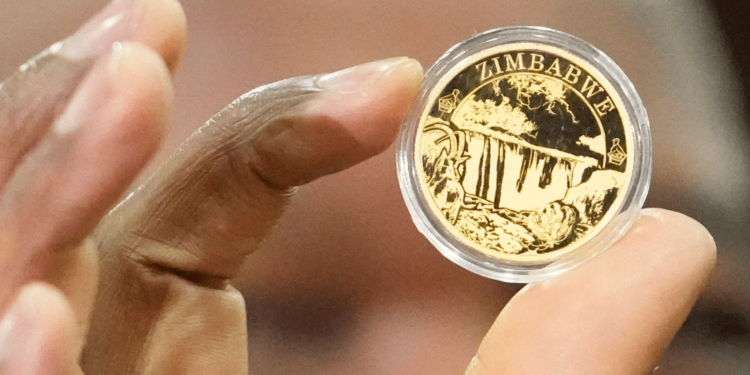Zimbabwe’s Gold-Backed Currency, ZiG, Weakens for the First Time Amidst Precious Metal Volatility
The ZiG, Zimbabwe’s novel gold-backed currency, has experienced its first decline since its recent introduction.
On Thursday, it traded 1% weaker at 13.4 per dollar, closely mirroring the downward trend in gold prices over the past three days. The ZiG derives its value from a diverse basket of precious metals, including approximately 2.5 tons of gold,alongside USD 100 mn in foreign currency reserves held by the central bank.
Launched on April 8, the ZiG replaced the Zimbabwean dollar, which had suffered an 80% loss against the US dollar since the beginning of the year.
Vice President Constantino Chiwenga emphasized that the ZiG represents a strategic move away from reliance on US dollars within the Zimbabwean economy, saying that by 2030, US dollars will no longer be accepted as legal tender, despite currently accounting for around 80% of transactions.
Chiwenga asserted, “ZiG is here to stay forever.” This bold step reflects the government’s unwavering
commitment to a de-dollarization program rooted in fiscal discipline, monetary prudence, and economic
revitalization.
Since its debut, the ZiG has appreciated more than 2% against the dollar, as indicated by data on the central bank’s website. To bolster gold reserves and combat smuggling, authorities plan to closely monitor the mining industry.
Mining companies have been required to contribute part of their royalties in gold since the end of 2022.
The ZiG’s link to gold mitigates volatility and manipulation risks. Authorities anticipate that it will stabilize
currency markets and eliminate premiums on the parallel market in Zimbabwean cities.
To maintain stability, the government vows to take decisive action against street market speculators who artificially inflate prices.

















